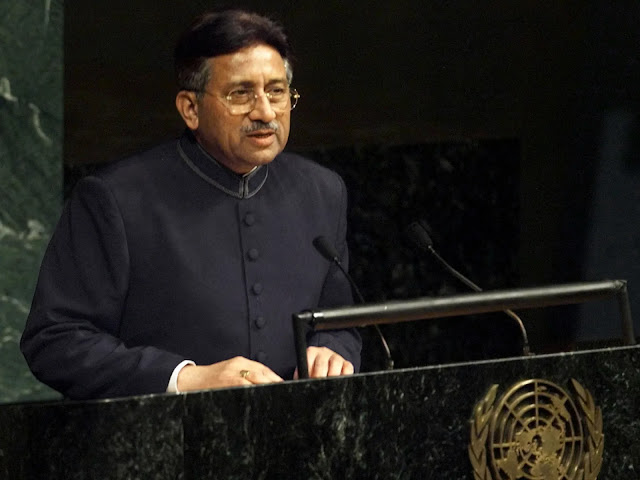The September 11th attacks in 2001 dramatically changed the world and led to the start of the war in Afghanistan. It resulted in significant loss of life, significant changes to the global political and security landscape, and heightened concerns about terrorism. Operation Enduring Freedom officially launched less than a month after the September 11th attacks in response to the terrorist threat. It marked the beginning of the U.S. military operations in Afghanistan, which lasted for several years and had a significant impact on the region.

President George W. Bush stated that the objective of Operation Enduring Freedom was to disrupt al-Qaeda’s use of Afghanistan as a base of operations and to attack the military capability of the Taliban regime, which was harbouring al-Qaeda terrorists. The operation marked the start of the U.S. military involvement in Afghanistan and had far-reaching consequences for the region and the world. Operation Enduring Freedom indeed evolved into a prolonged multi-front war on terror that lasted for nearly two decades. The conflict sparked criticism and raised questions about its duration and mission, and the terrorism threat landscape has changed over time with the emergence of new threats such as ISIS and homegrown extremists. The war had a significant impact on the region and beyond, and its legacy continues to shape international relations and security policies.
The original goal of Operation Enduring Freedom, which was to disrupt al Qaeda’s operations in Afghanistan and attack the military capabilities of the Taliban regime, has been widely acknowledged to have been accomplished. However, the question of whether the US is safer today remains a matter of debate among security experts, with opinions varying on the current state of the terrorism threat. Some experts like retired Col. Christopher Kolenda believe that the US is safer from an al Qaeda attack, while others may have different opinions on the matter.

Vanda Felbab-Brown, a senior fellow at the Brookings Institution, who studies Afghanistan and terrorism, has acknowledged that the removal of the haven provided to al Qaeda by the Taliban has significantly reduced the potency of the terrorist group. According to her, the Taliban is currently not motivated to conduct attacks against the US homeland and does not attempt to do so. This reflects the current state of the threat from Afghanistan, which is limited to conflict with the US military in the region rather than a direct threat to the US homeland. Despite the Taliban not being a direct threat to the US homeland, they continue to pose a threat to US forces in Afghanistan and have been responsible for the killing of US servicemembers in the region. Additionally, Al Qaeda continues to try to establish a presence in multiple countries and encourage attacks against the West, including the US, as noted in the 2019 Worldwide Threat Assessment from former Director of National Intelligence Dan Coats. The threat of terrorism and the activities of terrorist organizations remain a concern for US security and foreign policy. According to retired Col. Christopher Kolenda, Al Qaeda has been unable to reestablish a presence in Afghanistan, but the ongoing investment in troops and resources raises questions about the necessity and effectiveness of this approach. The prolonged nature of the conflict has resulted in significant costs in terms of lives lost and money spent, as well as impacts on America’s credibility and standing in the world. The need for alternative approaches to achieving the goal of preventing the establishment of a large-scale terror haven for Al Qaeda or ISIS is being increasingly considered by security experts. The U.S. combat operations in Afghanistan under Operation Enduring Freedom officially ended on December 31, 2014, but were immediately replaced by Operation Freedom’s Sentinel, which continued the NATO-led mission in the country with a focus on training, advising, and assisting Afghan forces and conducting counter-terrorism operations against the local ISIS affiliate. According to the Department of Defense, there were 2,349 U.S. military casualties in Operation Enduring Freedom and 80 in Operation Freedom’s Sentinel, bringing the total number of casualties to 2,429 people. That’s a tragic reality for many military leaders who have lost troops under their command. The cost of war is not just measured in financial terms, but also in human lives lost and the impact it has on families and loved ones, as well as on those who have led and served. The loss of six soldiers under Col. Kolenda’s command highlights the personal toll of war and serves as a reminder of the sacrifices made by service members and their families.
These statements reflect the changes that have taken place in Afghanistan over the past two decades since Operation Enduring Freedom was launched. While there have been significant improvements in the country, especially in terms of the oppression of women and the ability of girls to go to school, the war has also had a significant human cost, both in terms of casualties and the lasting impact on soldiers and their families. The ongoing presence of U.S. and coalition forces in Afghanistan, along with the ongoing violence, suggests that the situation remains far from stable and that much work remains to be done to bring peace and security to the country.
Despite their efforts to end the war and bring U.S. troops home, both Presidents Bush and Obama faced challenges and resistance in ending the conflict due to the evolving situation in Afghanistan and the persistence of the Taliban and al-Qaeda threats. The conflict has since become America’s longest war, lasting over two decades, with U.S. military presence continuing to this day.
In recent years, the U.S. has tried to negotiate a peace deal with the Taliban to end the conflict, with the Trump administration signing a deal in February 2020. However, despite the agreement, violence has continued in the country and the Taliban has not fully renounced its ties to terrorism. The U.S. and its allies continue to maintain a military presence in the country to support the Afghan government and prevent the resurgence of terrorist groups like al Qaeda and ISIS. The future of the conflict in Afghanistan remains uncertain and the situation on the ground continues to be complex and challenging. Donald Trump, before he became president, was a critic of the war in Afghanistan and called for bringing American troops home. However, once in office, he continued the U.S. military presence in the country, albeit with a focus on reducing the number of troops and emphasizing counter-terrorism efforts. In 2019, the Trump administration resumed peace talks with the Taliban and signed a historic agreement in February of that year. Under the terms of the agreement, the U.S. agreed to withdraw its troops from Afghanistan within 14 months in exchange for counterterrorism guarantees from the Taliban. However, the deal was criticized for not including the Afghan government in the peace negotiations and for not addressing the issue of human rights in the country. Despite this, the U.S. has continued to reduce its military presence in the country, with the current number of troops in Afghanistan estimated to be around 2,500. He added that the focus should shift to a “more comprehensive, more sustainable and more holistic approach to countering terrorism,” which involves diplomacy, development and governance in addition to military action. This approach seeks to address the underlying grievances and conditions that can drive people towards terrorism, rather than solely relying on military force to combat it.
“The focus on Afghanistan, while important, has taken away from other critical security priorities,” Cohen said. “As a result, we have seen the growth of ISIS and other extremist groups in other parts of the world, which continue to pose a significant threat to the U.S. and its interests globally.”
This shift in the source of threat highlights the need for the U.S. to re-evaluate its strategy and approach to counter-terrorism and national security, as the nature of the threat continues to change and evolve. Cohen pointed out that the current threat to the U.S. is more domestically focused, with “individuals who are self-radicalized, or radicalized by foreign terrorist organizations through the internet.” This shift like the threat has made it more difficult for traditional counter-terrorism efforts to effectively address the danger. Cohen emphasized that the current threat to the U.S. is now primarily from individuals within the country who are inspired by extremist ideologies, rather than from organized foreign terrorist groups. He also expressed concern that despite the numerous deadly attacks by such individuals, little has been done to improve the country’s ability to prevent such attacks. Cohen further explains that this shift in tactics by terrorists highlights the need for a more comprehensive approach to combating terrorism, one that includes not only traditional military and intelligence efforts but also addressing the root causes of radicalization and working with partners in the private sector, such as tech companies, to better understand and address the use of technology by terrorists. The current threat facing the US requires a multi-disciplinary approach, combining both hard and soft power, to effectively combat terrorism.
According to the assessment by the National Counterterrorism Center in 2015, the current terrorism threat environment has shifted from 9/11-style catastrophic attacks to a greater recurring threat from lone offenders and possibly loose networks of individuals. The NCC’s former director, Nicholas Rasmussen, noted that out of the 11 attacks in the West since the previous May, 10 were carried out by individual violent extremists. This shift in the terrorism threat highlights the need for effective measures to address the threat posed by lone offenders and loosely connected networks, rather than just focusing on preventing large-scale catastrophic attacks. Fernandez added that the threat of terrorism is always evolving and that the tactics used by terrorists will continue to change. It is the job of counter-terrorism officials to stay ahead of these changes and to continue to adapt their strategies to keep the public safe. He emphasized the importance of intelligence gathering, international cooperation, and a multi-layered approach to counter-terrorism that includes everything from law enforcement to intelligence, to community outreach and engagement. This has led to a shift in resources and focus away from domestic terrorism threats to those posed by foreign actors. The prioritization of the Trump administration has been criticized for not addressing the growing concern of domestic terrorism and the need for stronger domestic counter-terrorism efforts. The evolving nature of terrorism, including the use of social media for radicalization and inspiration, has made it a challenging issue to address and requires constant adaptation by counter-terrorism officials.
The 2019 Worldwide Threat Assessment highlighted the growing threat of homegrown violent extremists in the United States. However, the Trump administration prioritized the threat posed by external actors, as seen in its efforts to implement a travel ban on several Muslim countries. This has been a topic of criticism among some experts who argue that the focus should be on domestic terrorism as well.
In the assessment by former Director of National Intelligence (DNI), Dan Coats, he highlighted the threat posed by homegrown violent extremists (HVEs) to the United States. However, the Trump administration’s focus has primarily been on external terror threats, as evidenced by the travel ban affecting several Muslim-majority countries. Despite this, experts such as Vanda Felbab-Brown have expressed concern over the rise of white supremacist movements as a growing threat, particularly given the number of Americans who have been killed in recent years by such attacks.
Felbab-Brown emphasizes that the current administration has not given enough focus on white supremacism, which has emerged as a growing problem in the U.S. The think tank New America states that since 9/11, the same number of people have been killed in the U.S. by both jihadists and right-wing extremists. The head of the FBI’s counterterrorism division, Michael McGarrity, also states that incidents of domestic terrorism are on the rise. Felbab-Brown states that this is a matter of concern, as the number of Americans who have died from white supremacist attacks over the past three years is the greatest of any type of terrorist attack.

The US and NATO troops started withdrawing from Afghanistan in March 2020 under the US-Taliban deal, reducing the number of US troops to 8,600 by June 2020. The US reduced its troop levels to below 5,000 by November 2020 and to 2,500 by January 2021. The Trump administration aimed to complete the withdrawal by May 2021 but this was met with criticism from some quarters. Incoming President Biden’s administration reviewed the peace agreement and decided to withdraw the remaining 2,500 soldiers from Afghanistan. NATO did not decide on how to proceed with the withdrawal and Britain, as well as NATO troops, were expected to follow the US’s lead. In the aftermath of the US-Taliban agreement in 2020, the Taliban increased its attacks on Afghan security forces while US military support was reduced, causing the Afghan military to mostly take defensive positions. The Taliban spread propaganda and disinformation about the agreement, leading to a decrease in the morale of Afghan forces. In May 2021, the Taliban launched a major offensive, quickly making advances against the retreating Afghan army. By July 2021, the Taliban had seized 139 districts, and the US military assessed that the Afghan government would collapse soon. Spokesmen for the Taliban demanded that all foreign forces withdraw from Afghanistan, and refused to participate in talks until that happened. The Taliban’s control of districts increased, with half of the country under their control according to a report by the Chairman of the Joint Chiefs of Staff. The UN Security Council reported that al-Qaeda in the Indian Subcontinent was still present in Afghanistan and operating under Taliban protection.

Former Pakistan’s Prime Minister Imran Khan was closely monitoring the situation in Afghanistan and to this day he is determined to play a role in providing humanitarian and economic assistance to prevent a brewing humanitarian crisis. During a visit by the Deputy Prime Minister of Qatar, the two leaders discussed developments in bilateral relations in Afghanistan. Qatar is considered a vital platform for Taliban and US negotiations, and PM Khan called on the international community to stand in solidarity with the people of Afghanistan to ensure economic stability, peace, and development. Pakistan’s Foreign Minister, Shah Mahmood Qureshi, is also committed to protecting the rights of the Afghan people and avoiding a humanitarian crisis. He opposes international isolation for Afghanistan and is calling for engagement to move forward. The recent visit of former ISI chief, Lt General Faiz Hameed, to Kabul is regarded as significant for peace and harmony in the region. Pakistan is showing its readiness to work with the new Afghan administration. In the past, the US, along with Saudi Arabia and Pakistan, led the creation of mujahideen to fight the Russians in Afghanistan. However, the US was unable to beat the ideology and teachings of the Taliban, and they had to leave Afghanistan after 20 years of military war. The Taliban inherited a vast number of US weapons and equipment, but their ideology proved to be unbreakable. With the leniency shown by both the US and the Taliban, a new ray of hope has emerged for stability in Afghanistan. The conflict in Afghanistan is rooted in economic, cultural, and tribal links, and there is a need for all ethnic groups to come together to avoid civil war. Pakistan has played a role as a mediator in settling inner differences among different ethnic groups. The Taliban has shown a new approach to governance, with a determination to provide fundamental rights. However, it remains to be seen how much the Taliban will change after their victory. The land of Afghanistan belongs to the Afghan people, and the international community should help with their political and economic stability.
Dr Maleeha Lodhi, a strategist and diplomat, argued in “The Economist” that Pakistan warned the US not to invade Afghanistan after 9/11. She stated that Pakistan believed that military action was not a solution and that the focus should have been on targeting Al-Qaeda. After 20 years of military intervention, Afghanistan was taken over by the Taliban and has a new approach to governance that provides fundamental human rights. The criticism of the US invasion of Afghanistan, which was based on the wrong belief that military force was needed to fight extremism, has been proven to be incorrect by recent events. The Taliban has acquired a large number of military equipment and weapons from the US military, which includes various types of aircraft, vehicles, weapons, and ammunition. Despite 20 years of military conflict, the Taliban remains determined in its ideology and was able to capture Helmand in 2009, resulting in significant losses for the US military. The conflict in Afghanistan is complex and involves economic, cultural, and tribal factors. The ethnic composition of Afghanistan is predominantly Pashtun (40-50%), with Tajiks making up 25%, and Hazaras and Uzbeks each accounting for about 9%. To avoid civil war, Afghans need to work together and address ethnic differences. Pakistan has played a role as a mediator in resolving these differences. In 2021, the Taliban has shown a new approach to governance and is determined to provide fundamental rights, but it remains to be seen how much the group will change. The international community should support Afghanistan’s political and economic stability.










2 Comments